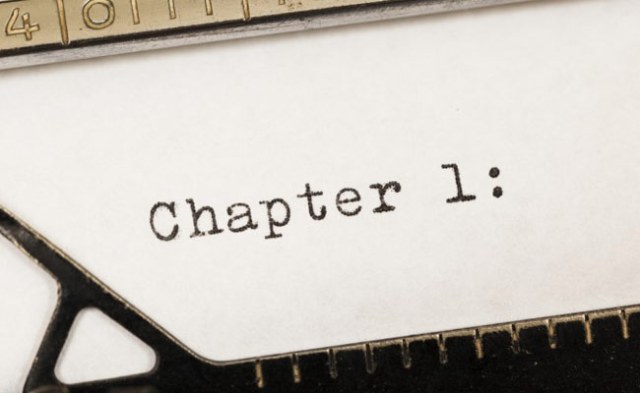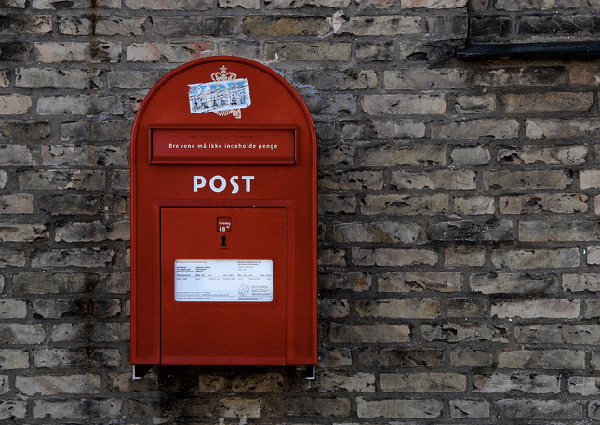
If you are looking for a few tips on how to write a cracking first chapter, you couldn’t do much better than this. Here is an opening chapter masterclass from Author Elizabeth Sims. Enjoy!
**********************************************************************************
When you decide to go to a restaurant for a special dinner, you enjoy the anticipation. You’ve committed to spending sufficient time and money, and now you’ve arrived, and the place looks good and smells good. You smile and order an appetizer. When it comes, you enjoy it as a foretaste of the larger, more complex courses that will follow, but you also savor it for what it is: a delicious dish, complete in itself. If it’s a truly great appetizer, you recognize it as an exquisite blend of flavor, texture and temperature. And you’re happy, because you know you’ll be in good hands for the entire evening.
Isn’t that what it’s like to begin reading a terrific book?
The first chapter is the appetizer – small, yet so tremendously important. And so full of potential.
As an aspiring author, the prospect of writing Chapter One should not intimidate, but excite the hell out of you. Why? Because no other part of your book can provide you with the disproportionate payoff that an excellent first chapter can. Far more than a great query letter, a great Chapter One can attract the attention of an agent. It can keep a harried editor from yawning and hitting “delete.” It can make a bookstore browser keep turning pages during the slow walk to the cash registers. And yes, it can even keep a bleary-eyed owner of one of those electronic thingamajigs touching the screen for more, more, more!
Fiction, like food, is an art and a craft. Here’s how to blend inspiration with technique and serve up an irresistible Chapter One.
#1: RESIST TERROR.
Let’s be honest: Agents and editors like to make you quiver and sweat as you approach Chapter One. All those warnings: “Grab me from the opening sentence! Don’t waste one word! If my attention flags, you’ve failed – you’re down the toilet! In fact, don’t even write Chapter One! Start your book at Chapter Four! Leave out all that David Copperfield crap!” From their perspective it’s an acid test. They know how important Chapter One is, and if you’re weak, they’ll scare you into giving up before you begin. (Hey, it makes their jobs easier: one less query in the queue.)
Here’s the truth: Agents and editors, all of them, are paper tigers. Every last one is a hungry kitten searching for something honest, original and brave to admire. Now is the time to gather your guts, smile and let it rip.
Your inner genius flees from tension, so first of all, relax. Notice that I did not say agents and editors are looking for perfect writing. Nor are they looking for careful writing. Honest, original and brave. That’s what they want, and that’s what you’ll produce if you open up room for mistakes and mediocrity. It’s true! Only by doing that will you be able to tap into your wild and free core. Let out the bad with the good now, and you’ll sort it out later.
Second, remember who you are and why you’re writing this book. What is your book about? What purpose(s) will it serve? Write your answers down and look at them from time to time as you write. (By the way, it’s OK to want to write a book simply to entertain people; the noblest art has sprung from just such a humble desire.)
And third, if you haven’t yet outlined, consider doing so. Even the roughest, most rustic framework will give you a sharper eye for your beginning and, again, will serve to unfetter your mind. Your outline could be a simple list of things-that-are-gonna-happen, or it could be a detailed chronological narrative of all your plot threads and how they relate. I find that knowing where I’m headed frees my mind from everything but the writing at hand. Being prepared makes you calm, and better equipped to tap into your unique voice – which is the most important ingredient in a good Chapter One.
#2: DECIDE ON TENSE AND POINT OF VIEW.
Most readers are totally unconscious of tense and POV; all they care about is the story. Is it worth reading? Fun to read? But you must consider your tense and POV carefully, and Chapter One is go time for these decisions. It used to be simple. You’d choose from:
a) First person: I chased the beer wagon.
b) Third-person limited: Tom chased the beer wagon.
or
c) Omniscient: Tom chased the beer wagon while the villagers watched and wondered, Would all the beer in the world be enough for this oaf?
… and you’d always use past tense.
But today, novels mix points of view and even tenses. In my Rita Farmer novels I shift viewpoints, but limit all POVs to the good guys. By contrast, John Grisham will shift out of the main character’s POV to the bad guy’s for a paragraph or two, then back again. (Some critics have labeled this practice innovative, while others have called it lazy; in the latter case, I’m sure Grisham is crying all the way to the bank.) It’s also worth noting that studies have shown that older readers tend to prefer past tense, while younger ones dig the present. (If that isn’t a statement with larger implications, I don’t know what is.)
Many writing gurus tell you to keep a first novel simple by going with first person, past tense. This approach has worked for thousands of first novels (including mine, 2002’s Holy Hell), but I say go for whatever feels right to you, simple or not. I do, however, recommend that you select present or past tense and stick with it. Similarly, I advise against flashbacks and flash-forwards for first novels. Not that they can’t work, but they seem to be off-putting to agents and editors, who will invariably ask, “Couldn’t this story be told without altering the time-space continuum?”
The point is, you want your readers to feel your writing is smooth; you don’t want them to see the rivets in the hull, so to speak. And the easiest way to do that is to create fewer seams.
If you’re still unsure of your tense or POV choices, try these techniques:
Go to your bookshelf and take a survey of some of your favorite novels. What POVs and tenses are selected, and why do you suppose the authors chose those approaches?
Rehearse. Write a scene using first person, then third-person limited, then omniscient. What feels right?
Don’t forget to consider the needs of your story. If you plan to have simultaneous action in Fresno, Vienna and Pitcairn, and you want to show it all in living color, you almost certainly need more than one POV.
And if you’re still in doubt, don’t freeze up – just pick an approach and start writing. Remember, you can always change it later if you need to.
#3: CHOOSE A NATURAL STARTING POINT.
When you read a good novel, it all seems to unfold so naturally, starting from the first sentence. But when you set out to write your own, you realize your choices are limitless, and this can be paralyzing. Yet your novel must flow from the first scene you select.
Let’s say you’ve got an idea for a historical novel that takes place in 1933. There’s this pair of teenagers who figure out what really happened the night the Lindbergh baby was abducted, but before they can communicate with the police, they themselves are kidnapped. Their captives take them to proto-Nazi Germany, and it turns out there’s some weird relationship between Col. Lindbergh and the chancellor – or is there? Is the guy with the haircut really Lindbergh? The teens desperately wonder: What do they want with us?
Sounds complicated. Where should you start? A recap of the Lindbergh case? The teenagers on a date where one of them stumbles onto a clue in the remote place they go to make out? A newspaper clipping about a German defense contract that should have raised eyebrows but didn’t?
Basically, write your way in.
Think about real life. Any significant episode in your own life did not spring whole from nothing; things happened beforehand that shaped it, and things happened afterward as a result of it. Think about your novel in this same way. The characters have pasts and futures (unless you plan to kill them); places, too, have pasts and futures. Therefore, every storyteller jumps into his story midstream. Knowing this can help you relax about picking a starting point. The Brothers Grimm did not begin by telling about the night Hansel and Gretel were conceived; they got going well into the lives of their little heroes, and they knew we wouldn’t care about anything but what they’re doing right now.
If you’re unsure where to begin, pick a scene you know you’re going to put in – you just don’t know where yet – and start writing it. You might discover your Chapter One right there. And even if you don’t, you’ll have fodder for that scene when the time comes.
Here are a few other strategies that can help you choose a starting point:
- Write a character sketch or two. You need them anyway, and they’re great warm-ups for Chapter One. Ask yourself: What will this character be doing when we first meet him? Write it. Again, you might find yourself writing Chapter One.
- Do a Chapter-One-only brainstorm and see what comes out.
The truth is, you probably can write a great story starting from any of several places. If you’ve narrowed it down to two or three beginnings and still can’t decide, flip a coin and get going. In my hypothetical Lindbergh thriller, I’d probably pick the date scene, with a shocking clue revealed. Why? Action!
It’s OK to be extremely loose with your first draft of your first chapter. In fact, I recommend it. The important thing at this point is to begin.
#4: PRESENT A STRONG CHARACTER RIGHT AWAY.
This step might seem obvious, but too many first-time novelists try to lure the reader into a story by holding back the main character. Having a couple of subsidiary characters talking about the protagonist can be a terrific technique for character or plot development at some point, but not at the beginning of your novel.
When designing your Chapter One, establish your characters’ situation(s). What do they know at the beginning? What will they learn going forward? What does their world mean to them?
Who is the strongest character in your story? Watch out; that’s a trick question. Consider Kazuo Ishiguro’s The Remains of the Day. The main character, Stevens, is a weak man, yet his presence is as strong as a hero. How? Ishiguro gave him a voice that is absolutely certain, yet absolutely vacant of self-knowledge. We know Stevens, and because we see his limitations, we know things will be difficult for him. Don’t be afraid to give all the depth you can to your main character early in your story. You’ll discover much more about him later, and can always revise if necessary.
#5: BE SPARING OF SETTING.
Another common error many aspiring novelists make is trying to set an opening scene in too much depth. You’ve got it all pictured in your head: the colors, sounds, flavors and feelings. You want everybody to be in the same place with the story you are. But you’re too close: A cursory – but poignant! – introduction is what’s needed. Readers will trust you to fill in all the necessary information later. They simply want to get a basic feel for the setting, whether it’s a lunar colony or a street in Kansas City.
Pack punch into a few details. Instead of giving the history of the place and how long the character has been there and what the weather’s like, consider something like this:
He lived in a seedy neighborhood in Kansas City. When the night freight passed, the windows rattled in their frames and the dog in the flat below barked like a maniac.
Later (if you want) you’ll tell all about the house, the street, the neighbors and maybe even the dog’s make and model, but for now a couple of sentences like that are all you need.
But, you object, what of great novels that opened with descriptions of place, like John Steinbeck’s The Grapes of Wrath or Edna Ferber’s Giant? Ah, in those books the locale has been crafted with the same care as a character, and effectively used as one. Even so, the environment is presented as the characters relate to it: in the former case, man’s mark on the land (by indiscriminate agriculture), and in the latter, man’s mark on the sky (the jet plumes of modern commerce).
Another way to introduce a setting is to show how a character feels about it. In Dostoyevsky’s Crime and Punishment, Raskolnikov seethes with resentment at the opulence around him in St. Petersburg, and this immediately puts us on the alert about him. The setting serves the character; it does not stand on its own.
#6: USE CAREFULLY CHOSEN DETAIL TO CREATE IMMEDIACY.
Your Chapter One must move along smartly, but in being economical you cannot become vague. Difficult, you say? It’s all in the context.
The genius of books as diverse as Miguel de Cervantes’ Don Quixote and Robin Cook’s Coma lies in the authors’ generosity with good, authentic detail. Cervantes knew that a suit of armor kept in a junk locker for years wouldn’t merely be dusty, it would be corroded to hell – and that would be a problem to overcome. Likewise, Cook, himself a doctor, knew that a patient prepped for surgery would typically be given a calming drug before the main anesthetic – and that some patients, somehow, do not find peace even under the medication, especially if they have reason not to.
If you’re an expert on something, go ahead and show that you know what you’re talking about. One of the reasons my novel Damn Straight, a story involving a professional golfer, won a Lambda Award is that I know golf, and let my years of (painful) experience inform the book. I felt I’d done a good job when reviewer after reviewer wrote, “I absolutely hate golf, but I love how Sims writes about it in this novel. …”
Let’s say your Chapter One begins with your main character getting a root canal. You could show the dentist nattering on and on as dentists tend to do, and that would be realistic, but it could kill your chapter, as in this example:
Dr. Payne’s running commentary included the history of fillings, a story about the first time he ever pulled a tooth, and a funny anecdote about how his college roommate got really drunk every weekend.
Bored yet? Me too. Does that mean there’s too much detail? No. It means there’s too much extraneous detail.
How about this:
Dr. Payne paused in his running commentary on dental history and put down his drill. “Did you know,” he remarked, “that the value of all the gold molars in a city this size, at this afternoon’s spot price of gold, would be something on the order of half a million dollars?” He picked up his drill again. “Open.”
If the detail serves the story, you can hardly have too much.
#7: GIVE IT A MINI PLOT.
It’s no accident that many great novels have first chapters that were excerpted in magazines, where they essentially stood as short stories. I remember being knocked to the floor by the gorgeous completeness of Ian McEwan’s first chapter of On Chesil Beach when it was excerpted in The New Yorker.
Every chapter should have its own plot, none more important than Chapter One. Use what you know about storytelling to:
Make trouble. I side with the writing gurus who advise you to put in a lot of conflict early. Pick your trouble and make it big. If it can’t be big at first, make it ominous.
Focus on action. Years ago I got a rejection that said, “Your characters are terrific and I love the setting, but not enough happens.” A simple and useful critique! Bring action forward in your story; get it going quick. This is why agents and editors tell you to start your story in the middle: They’ve seen too many Chapter Ones bogged down by backstory. Put your backstory in the back, not the front. Readers will stick with you if you give them something juicy right away. I make a point of opening each of my Rita Farmer novels with a violent scene, which is then revealed to be an audition, or a film shoot or a rehearsal. Right away, the reader gets complexity, layers and a surprise shift of frame of reference.
Be decisive. A good way to do that is to make a character take decisive action.
Don’t telegraph too much; let action develop through the chapter. It’s good to end Chapter One with some closure. Because it is Chapter One, your readers will trust that the closure will turn out to be deliciously false.
#8: BE BOLD.
The most important thing to do when writing Chapter One is put your best material out there. Do not humbly introduce your story – present it with a flourish. Don’t hold back! Set your tone and own it. You’re going to write a whole book using great material; have confidence that you can generate terrific ideas for action and emotion whenever you want.
If you do your job creating a fabulous appetizer in Chapter One and follow it up well, your readers will not only stay through the whole meal, they’ll order dessert, coffee and maybe even a nightcap – and they won’t want to leave until you have to throw them out at closing time.
*************************************************************************************

This guest post is by bestselling author and writing authority Elizabeth Sims. She’s the author of seven popular novels in two series, including The Rita Farmer Mysteries and The Lillian Byrd Crime series. She’s also the author of the excellent resource for writers, You’ve Got a Book in You: A Stress-Free Guide to Writing the Book of Your Dreams, published by Writer’s Digest Books.
*****************************************************************
Via: http://www.writersdigest.com/whats-new/8-ways-to-write-a-5-star-chapter-one










